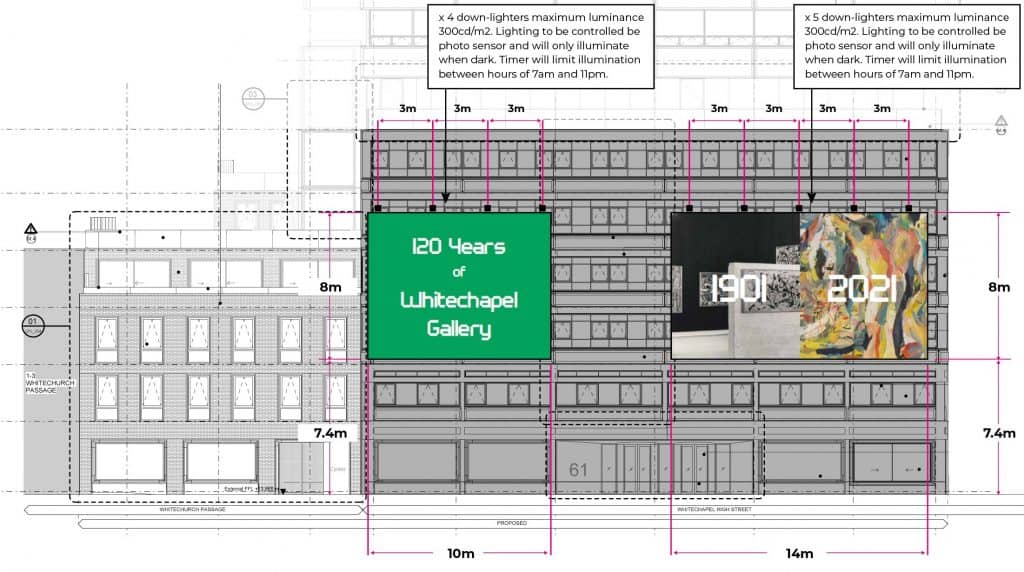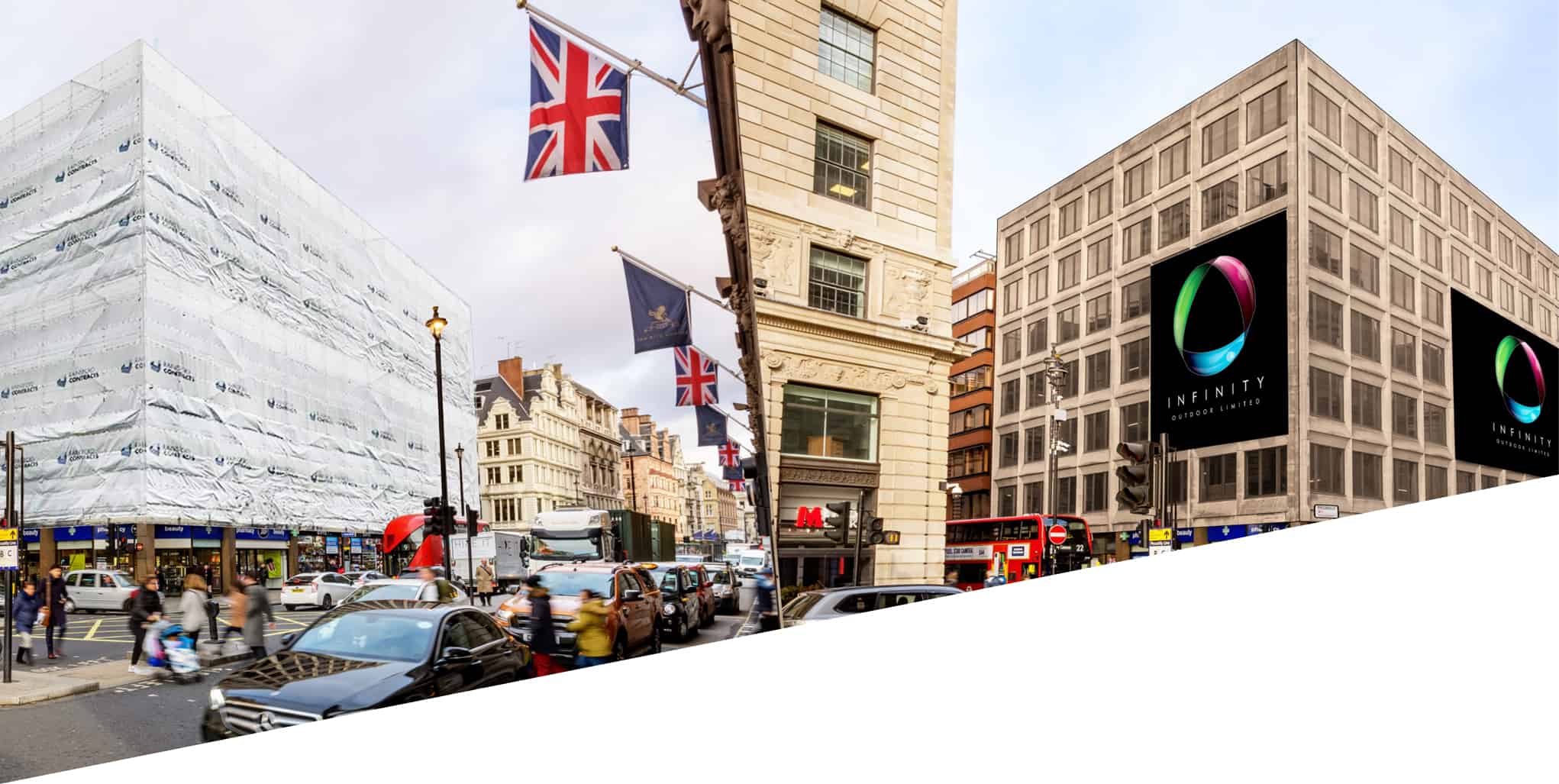Overcoming challenges with Shroud Advertising
Published: 27.11.20
Planning Insight recently secured advertisement consent to display large-scale temporary advertisement displays on two prominent London sites – Piccadilly and Whitechapel. Both sites are undergoing redevelopment and have scaffolding erected around the buildings, we obtained consent for large advertising shrouds which will be displayed on the scaffolding until the works are completed.
However, achieving advertisement regulations consent is shrouded with multiple challenges along the way. In this article we share the disputes, debates and accomplishments we experienced whilst working on these historical projects.
The Whitechapel project.
The Whitechapel site is in a highly visible location, at the junction of Commercial Road and Whitechapel High Street. It is on the edge of the Whitechapel Conservation Area and close to several Listed Buildings, including the Whitechapel Gallery opposite.
This was a particularly challenging site that had earlier experienced an appeal dismissal due to the impact of a commercial banner on the conservation area, and nearby heritage assets. This was, however, a very large banner, covering the entire western facing elevation of the building.
The dismissed appeal was a major hurdle to overcome.
We re-evaluated the site and engaged with Whitechapel Gallery. It was our suggestion that we could provide advertising for the Gallery on the northern elevation. This would increase their presence whilst and foot fall, mediating any perceived impact on the setting of the heritage assets. This was particularly welcomed by the Gallery who appreciated the opportunity in what is a tough time for the arts.

We proposed two large banners commemorating the Gallery’s 120th year on the northern elevation, and a single large commercial banner was approved on the eastern facing elevation. The application was approved by delegated powers.
The Piccadilly project.
Our initial application for consent was refused by Westminster earlier in 2020. The Council’s reasons were due to the impact on the conservation area and nearby heritage assets. We subsequently appealed the decision.
The crux of our argument was that an advertising shroud, set within a 1:1 replication of the existing façade, is much more preferable than a utilitarian mesh scaffold shroud. The Council were of the view that a mesh shroud has a ‘neutral’ impact on heritage assets – we strongly disputed this. To this end, we prepared CGI’s showing the proposal and the alternative mesh shroud, this clearly illustrated which had a more harmful impact.
The Council had issued a fairly generic assessment of the site, and failed to consider the merits of the scheme, or indeed the impact on amenity – an all-too-familiar occurrence. We contested the Council’s stock response and the Inspector agreed with our reasoning, awarding full costs.
He noted:
“Where the outcome of a planning decision hinges on an assessment of a particular issue, it is reasonable to expect realistic and specific evidence to be put forward to explain the consequences of the proposal. While the Council asserts that it did assess the proposal fully and carefully, the evidence before me does not back up that claim. I am unable to conclude that the Council’s decision was supported by any significant objective analysis of the proposal”.
These projects were extremely challenging, and successes were hard fought. Both sites required an innovative approach to obtain the desired outcome.


